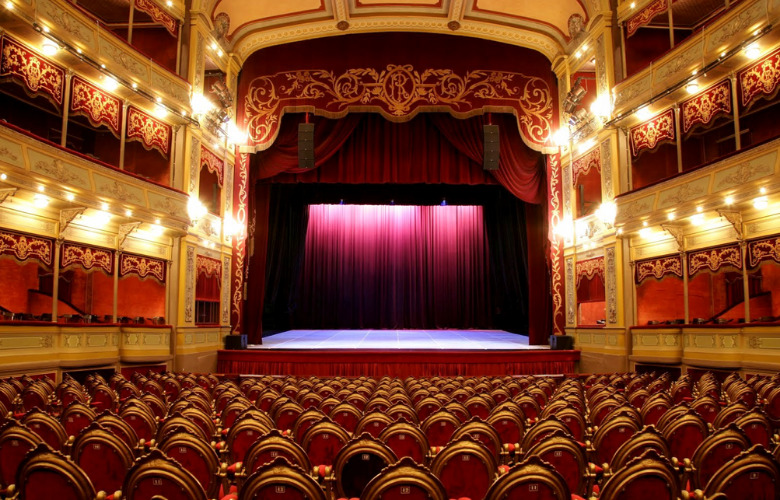
Mexico City is a vibrant blend of cultural heritages. Ranging from colourful pre-Hispanic folk art to works of the great muralists of the 20th century. As for the performing arts, the city has plenty to offer as well. Ranging from opera, theatre, ballet, to rock concerts, classical orchestras, and concerts of other local and international music. A Spanish influence on most of the theatrical performances in the city can still be felt. However, in all areas of entertainment the cultural variety is continuously expanding.
Even with the strong Spanish influence on the city’s cultural heritage, there is an influence far older: The performance arts and theatre in Mexico date back all the way to the Aztecs.
Although there is no written works or translations of the Aztecs themselves, early missionaries have documented seeing the Aztecs, dance, sing and perform together.
Traditional theatre as we know it made its way to Mexico via the Spanish invasion.
Theater is considered one of the most important tools used by the Spaniards during the conquest to convert the indigenous population. Rather than an artistic performance it was perceived as a dynamic mechanism to spread catholic education.
After this overall rather dark period in history, Spain continued to influence theatre in Mexico in a more positive, creative sense until the Mexican revolution in the early part of the 20th century.
The Mexican revolution followed by its independence both influenced Mexico City’s theatres. During the revolution period, for example Zarzuela, a musical-theatrical genre of Spanish origin, was founded in Mexico. National stories were being retold and turned into highly energetic and festive spectacles.
The early 1900’s were a boom time for Mexican theatre. The Gran Teatro de Ópera was built at a time when Mexico City and the surrounding provinces saw theatre companies thriving like never before.
In addition to magnificent theatre venues being built, humorous plays were enacted in
Carpas (tent shows).
More recent, yet crucial for the development of Mexico City’s cultural identity, was the ever-growing, independent performing arts scene.
Independent theatre is not the most acclaimed in the capital. But it is one of the most avant-garde and worth discovering.
There are many forums, houses, and autonomous cultural centers in Mexico City dedicated to making theatre.
Small corners that inspire beauty through their performances only rather than through grand surroundings and special effects. In many ways, these are the best spaces for theatrical appreciation. Raw and authentic.
Some shows are even presented without scenery or costumes to aid in their expression. Yet they still dazzle, leaving a lasting impression on their audiences.
Here is a selection of some of the best theatres in Mexico City:
A museum and a majestic palace in which you’ll find events ranging from orchestral music to dance and opera pieces, to experimental music and, of course, theatre.
This space used to be occupied by the Xicoténcatl Theater before it burned down. It is now the City Theater “Esperanza Iris”, perhaps one of the most beautiful in the city. Besides plays, this forum features all kinds of classical and modern concerts.
Besides plays, there are concerts and other cultural events such as conferences with interesting political and social speakers in this forum.
It’s the main theatre of the National Autonomous University of Mexico. A venue located inside the University’s cultural center. Here other smaller theatrical venues, as well as the famous Sculptural Space are also located.
One of the most outstanding underground creative spaces of the capital. This independent theatre is an old house. The stage is set up in its patio. And the rooms are distributed as balconies from which you can watch the performances.
If walls could talk… The Blanquita has seen a lot of history. It was one of the theatres that promoted a sense of “Mexicanity” and Pre-Columbian identity in the dramatic arts scene of the capital.
It’s an immense room with neoclassic ceilings, arches, balconies, and doors. Diego Rivera painted his first mural on this stage in 1922: a 100-meter-long painting titled The Creation. This beautiful venue features concerts of different genres.
An old and rundown building in the Historical Center hides a small and beautiful theatre within. For a couple of years, it was used as a night club and then was abandoned until recently.
Theatre & Dance in Mexico, City info for Mexico City
Claire Bournet and ‘Trafic de Styles’ in Paris – an Interview
Mexican Theatre in the Wake of the Pandemic


Liam Klenk was born in Central Europe and has since lived on four continents. Liam has always been engaged in creative pursuits, ranging from photography and graphic design, to writing short stories and poetry, to working in theatre and shows. In 2016, Liam published his first book and memoir, 'Paralian'.
Read Full Profile© 2021 TheatreArtLife. All rights reserved.

Thank you so much for reading, but you have now reached your free article limit for this month.
Our contributors are currently writing more articles for you to enjoy.
To keep reading, all you have to do is become a subscriber and then you can read unlimited articles anytime.
Your investment will help us continue to ignite connections across the globe in live entertainment and build this community for industry professionals.